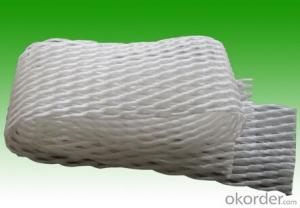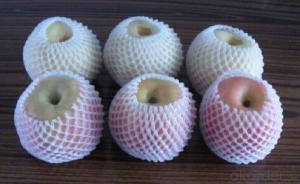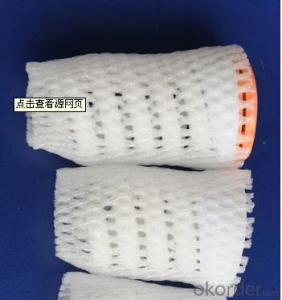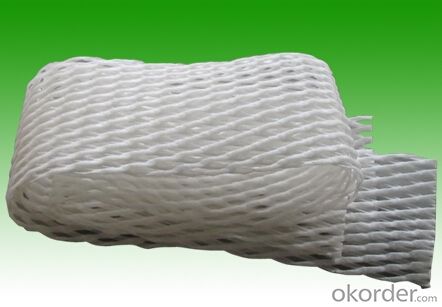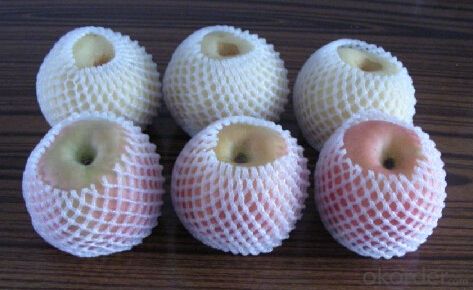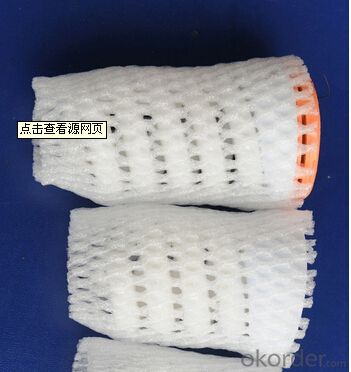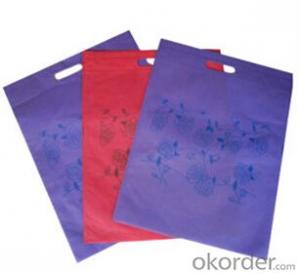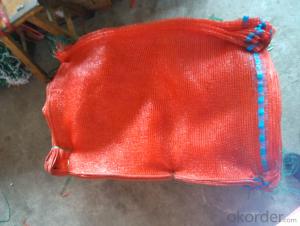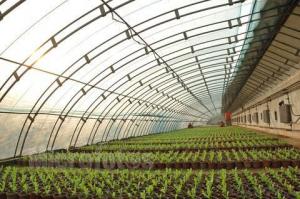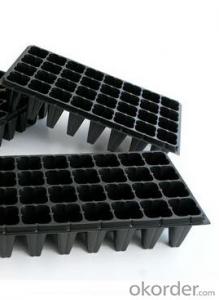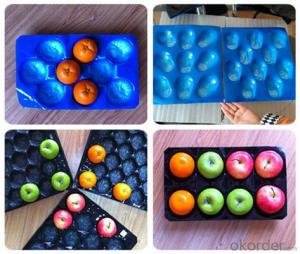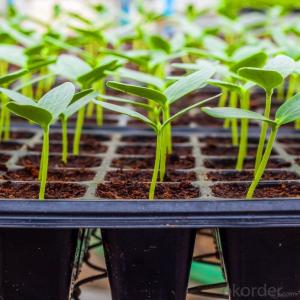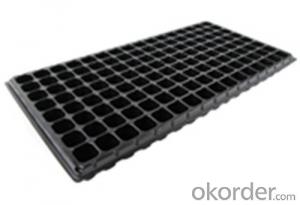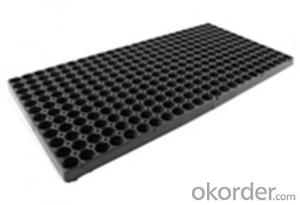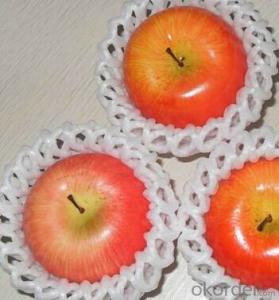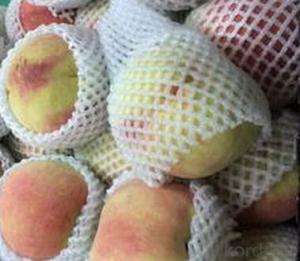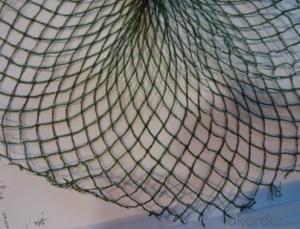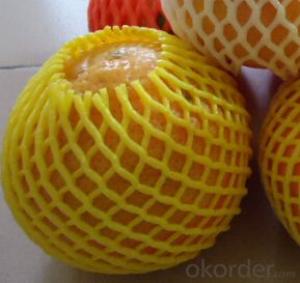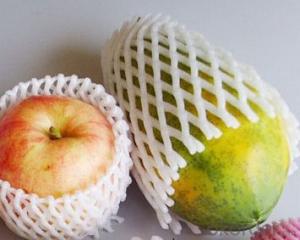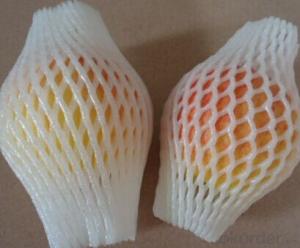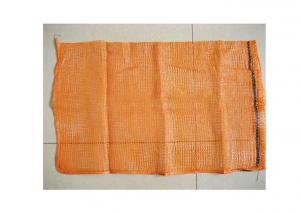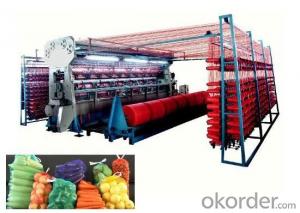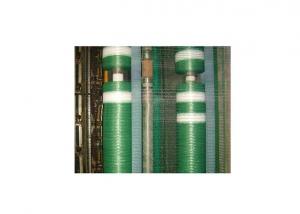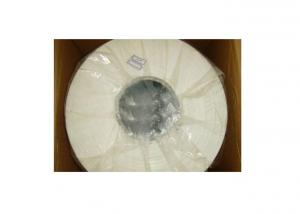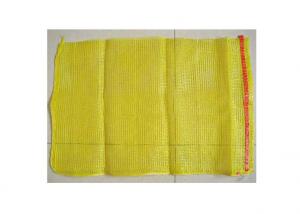White Foam Sleeve Net for Fruit or Flowers
- Loading Port:
- Qingdao
- Payment Terms:
- TT OR LC
- Min Order Qty:
- 100000 pc
- Supply Capability:
- 100000000 pc/month
OKorder Service Pledge
OKorder Financial Service
You Might Also Like
Introduction of White Foam Sleeve Net for Fruit or Flowers:
We can make any size as requested,including the diameter,lenth,thread diameter and quantity .also does the colors ,the lovely colors can help improve the products marketable.
Function of White Foam Sleeve Net for Fruit or Flowers:
1. It is mainly used as the package of the fruits in growing season and in supermarket.They can protect the surface of the fruits avoiding any damages in transit and during period of display in sales field.
2.To provide best protection for the fragile cargoes such as Glassware ,Ceramics and Electronic components,etc. the comprehensive protection can put cargoes in safer situation in transit , decrease the damage rate to the minimum.
Specifications of White Foam Sleeve Net for Fruit or Flowers:
1.Material:EPE
2.Size: any size is available
3.Weight: according to the product you want to pack
4.Color: white, pink, red, green yellow ( according to your requirement)
5.Food class
Pictures of White Foam Sleeve Net for Fruit or Flowers:

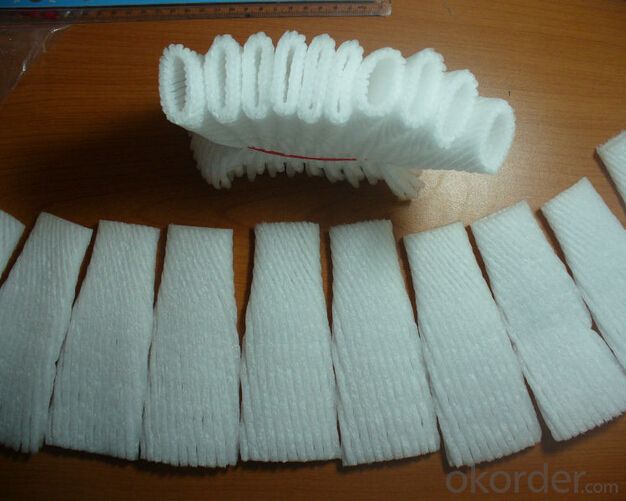
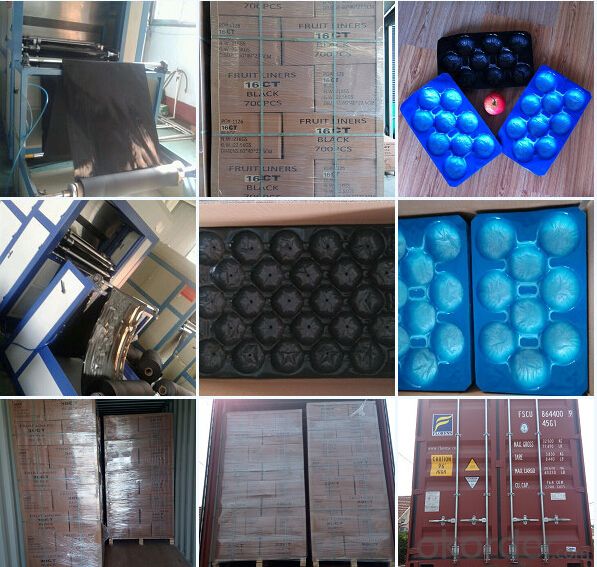
FAQ:
How to custom?
1. Please send your detailed requirements to me, Such as size, material, color, weigh, quatity or design.
2. I will make design for you according your requirements if you do not have design.
3. Once the design was confirm, The offer will send to you soon.
4. After price was confirmed, I will make Proforma invoice to you and ready to make
samples for you check.
5. After samples was confirmed, We will arrange the order production upon receipt of confirmed PI and your deposit.
6. After the goods is ready to ship, We will informs you the shipping date and other
detailed information.
7. We will help to track the goods until you receive it
- Q: What are some ground cover options for a Mediterranean garden?
- Some ground cover options for a Mediterranean garden include creeping thyme, rosemary, lavender, creeping phlox, and gazania.
- Q: How much does agricultural plastic cost?
- The cost of agricultural plastic can vary depending on various factors such as the type and quality of the plastic, the quantity purchased, and the location. It is best to consult with suppliers or conduct market research to get accurate and up-to-date pricing information.
- Q: Do nursery trays come with a germination guide?
- Yes, nursery trays typically come with a germination guide. This guide provides instructions and tips on how to successfully germinate seeds in the tray, including information on optimal temperature, moisture levels, and light exposure.
- Q: how do you get plastic oxidized ? I know putting it in the sun will but is there a faster way ? thanks .
- You can expose them to bacterial or fungal enzymes. That is an extremely broad category and they are likely to have some effect under certain circumstances. You can expose it to a strong oxidizer like ozone. Some would form from lightning strikes. It would probably take hundreds of years to seriously degrade some plastic that way. Some plastic would be seriously affected by some powerful chemical oxidizer. It would be unusual to find natural oxidizers more active unless you include the ionizing effects of UV light on the oxidizer itself. It may become a free radical and become far more reactive. Most of that would probably involve making compounds that are soluble in water so chemicals are leached away.
- Q: How do you control weeds when using ground cover?
- When using ground cover, controlling weeds can be achieved through a combination of methods such as regular maintenance, mulching, and selective herbicide application. Regularly inspecting the ground cover and manually removing any emerging weeds is crucial to prevent them from spreading. Applying a layer of organic mulch around the ground cover can help suppress weed growth by blocking sunlight and creating unfavorable conditions for weed establishment. Additionally, using a selective herbicide specifically designed for ground cover can effectively target and eliminate persistent weeds without harming the desired plants.
- Q: How does plastic bird netting help in protecting crops?
- Plastic bird netting helps in protecting crops by creating a physical barrier that prevents birds from accessing and damaging the crops. It acts as a deterrent, keeping birds away from the plants, fruits, or seeds, reducing the risk of crop loss or contamination. The netting is lightweight, durable, and easy to install, making it an effective and cost-efficient solution for crop protection against bird damage.
- Q: Are nursery trays suitable for moss gardens?
- Yes, nursery trays can be suitable for moss gardens. Nursery trays provide a convenient and controlled environment for growing moss, allowing for easy maintenance and transplanting. Additionally, the shallow and compact nature of nursery trays is well-suited for moss, which typically has a shallow root system.
- Q: Should i stop using plastic containers for my 6 month pregant wife, only use them for fruit and things like that, nothinng that is hot or being heated in the container..
- We all know that plastic leaches out things when hot or cold liquids are used in them. But for fruit and things, it should be fine. I guess you must be in charge of making her lunches, and she's lucky to have a devoted husband to do that for her.
- Q: Can ground cover plants be used to create a natural-looking lawn on slopes?
- Yes, ground cover plants can be used to create a natural-looking lawn on slopes. They can help prevent soil erosion, provide stability to the slope, and create a lush and aesthetically pleasing landscape. Ground cover plants, such as creeping thyme, creeping juniper, or ornamental grasses, are low-growing and spread quickly, forming a dense carpet-like cover. They require less maintenance compared to traditional lawns, making them an excellent choice for slopes.
- Q: This question asks about the various kinds of plastic films used in agriculture and their respective purposes.
- <p>Agricultural plastic films are used for a variety of purposes in farming. These include mulch films which help in weed control and moisture retention, greenhouse films that provide a controlled environment for plant growth, silage films for preserving forage crops, and nursery films for protecting young plants. There are also biodegradable films that decompose naturally to reduce environmental impact, and UV-stabilized films designed to withstand exposure to sunlight without breaking down. Each type of film serves a specific function, from improving crop yield to enhancing the quality of agricultural products.</p>
Send your message to us
White Foam Sleeve Net for Fruit or Flowers
- Loading Port:
- Qingdao
- Payment Terms:
- TT OR LC
- Min Order Qty:
- 100000 pc
- Supply Capability:
- 100000000 pc/month
OKorder Service Pledge
OKorder Financial Service
Similar products
Hot products
Hot Searches
Related keywords
